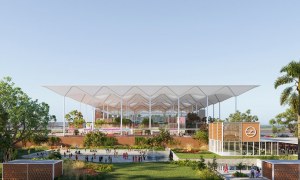🕑 Reading time: 1 minute
The researchers from the RMIT University of Australia have found a way to develop a sustainable concrete aggregate made from lightweight recycled plastic. This breakthrough was achieved in partnership with Victorian recycling organizations Replas, RED Group, and SR Engineering.
The development follows the rollout of a new legislation to phase out soft plastic exports from the country, which has led to a challenge in dealing with plastic waste.
The resulting plastic aggregate, called Polyrok, is made from soft plastics and was used in the concreting of a Coles car park in Horsham and a footpath in Frankston. This was accomplished after identifying the best strategy to design the concrete mix, optimizing the strength and acoustic energy absorption of the material.
Described as strong, fit for purpose, and durable recyclable concrete, Polyrok, is a sustainable alternative to mineral aggregate in concrete to be used for pathways, curbs, and channels.
Though it is easier to recycle glass and turn it into sand replacement, it is comparatively difficult to achieve the same results with plastic. It is difficult to mix concrete with plastic as the two materials don't bond naturally.
This made Replas and SR Engineering approach RMIT due to the latter's unique facilities to develop the best way to bond concrete and plastic. The method can recycle 100% of post-consumer soft plastics that are recovered from the REDcycle program.

Every cubic meter of Polyrok concrete poured can save an equivalent of 17,000 pieces of plastic packaging from landfills. The material is lighter than mineral aggregate, imparts less wear and tear on equipment, and offers enhanced durability.
Due to its reduced thermal mass, Polyrok reduces the carbon footprint, while combating the problem of plastic waste and climate change.
There's a growing need for sustainable disposal of plastic waste, and we need to develop several methods to do so while considering the aspect of economic benefits. Polyrok is comparatively cheap, homogenous, and has good insulation properties. The construction industry will be anticipating more such developments in the near future.



